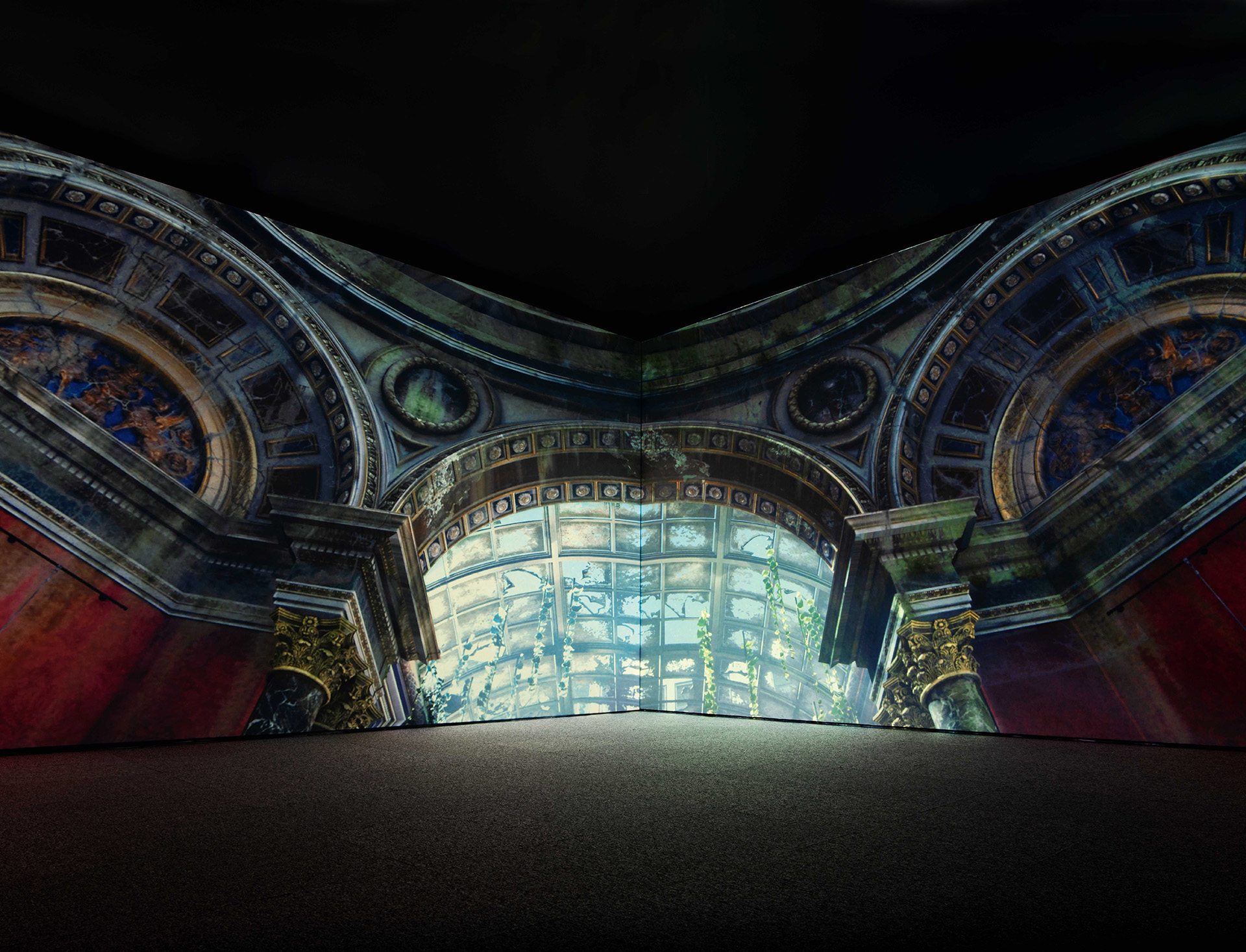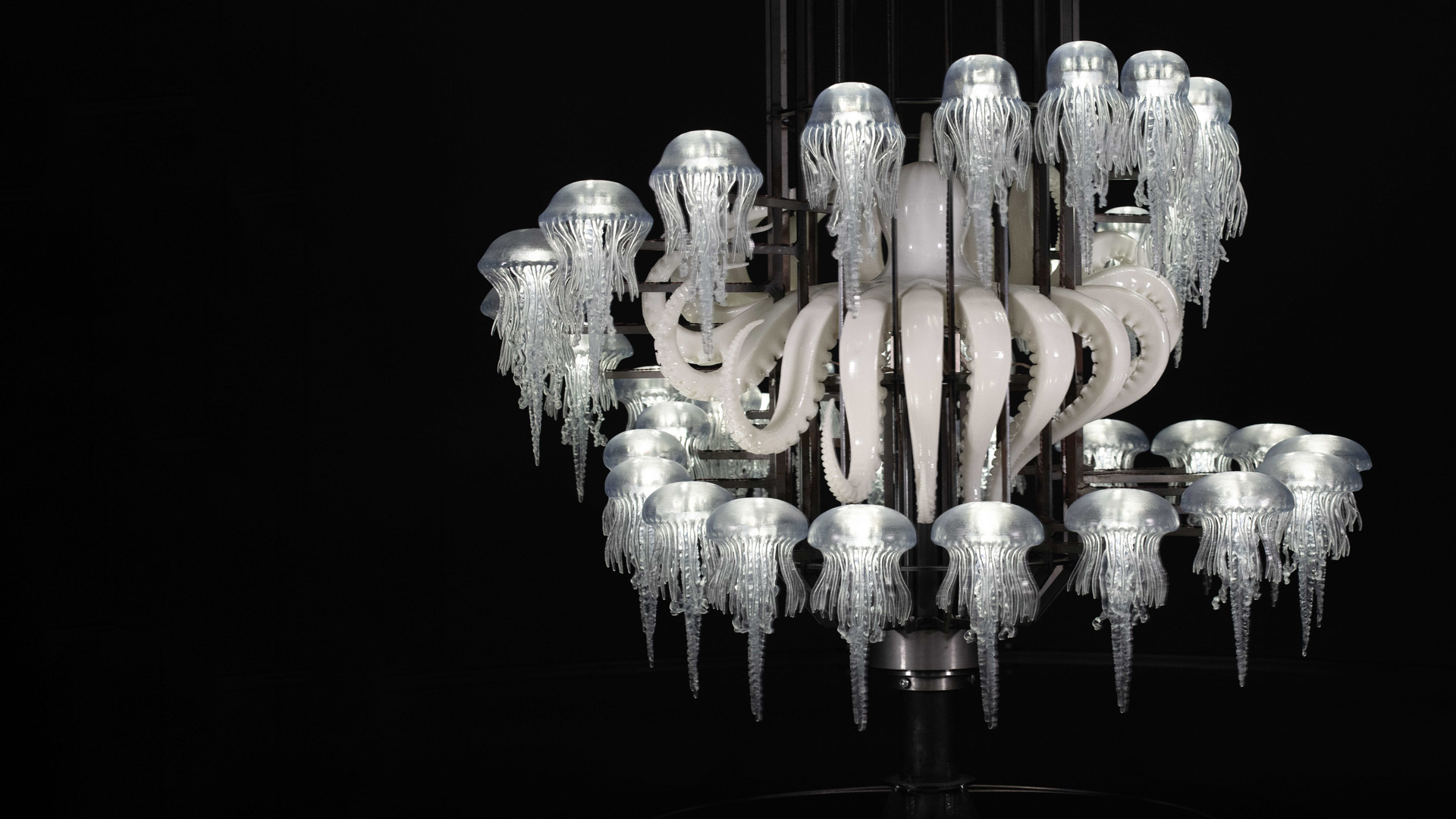Blog
An Interview with Mat Collishaw on “Arrhythmia”
23 November 2023 Thu
Bala Gürcan Madra made a comprehensive interview with Mat Collishaw about his works in the exhibition "Arrhythmia".
Bala Gürcan Madra: Mat, your artistic practice, which combines arts and sciences with a poetic perspective on nature, seems to be driven by a romantic worldview. What drives you to reveal beauty even in the darkest aspects of human existence?
Mat Collishaw: The works I make tend to draw on a wide range of disciplines and my job is to craft these threads into a coherent vehicle for the ideas I’m trying to coalesce. I don’t want the artworks to be literal or one-dimensional so it’s necessary to elevate them to a plane where the intentions are implicit rather than explicit. I’d like the viewer to initially experience the ideas as a sensory experience, to become engaged with the tableaux I’ve created and then it’s up to them if they want to start trying to unravel what it is they are contemplating. Beauty isn’t something I consciously aspire to, but I’m influenced by artists who use it as a tool to engage, the paintings of Caravaggio and the poetry of William Blake for example. Both of these artists reflect on the darker side of human experience, but they craft their ideas in such a way that you feel their intentions before you rationally interpret them. Beauty can also work as a counterpoint to the sometimes abject and debased subject matter I try to deal with; the image of a small child bashing an Iris flower with a stick has more pathos than an image of the same child beating a nettle.

Mat Collishaw, “Even to the End”, 2023.
BM: Your art frequently explores the interplay between diverse art historical traditions, skilfully merging Victorian aesthetics with modern innovations. Your recent zoetrope, Sounding Sirens, designed for Arrhythmia, appears to embody this dynamic. How does the use of illusion impact viewers' perception of the mechanical octopus and surrounding jellyfish imagery?
MC: I employ optical illusions in my artworks as they exploit a loophole in the human brain. Magic and optical illusions depend on misdirection and sleight of hand, they hack into certain biases and preconceptions that we are evolutionarily pre-programmed with. We don’t actually see the world as it is, evolution has designed an interface that allows us to see as much as we need to see in order to survive and procreate. We search for patterns and interpret external stimuli in a way that allows us to navigate our environment effectively.
This makes us susceptible to misdirections by agents who understand these limitations and exploit them in, for example, political propaganda or advertising. Certain tools can be employed that are designed to make us think or feel in a certain way about a product or an idea, our free will may not be quite as free as we sometimes like to think it is. In “Sounding Sirens”, I wanted to depict jellyfish as an insentient, herd-like multitude of unthinking organisms, surrounding and apprehending the more sentient octopus motif. I’d like the sculpture to embody this tension between unthinking herd-like behaviour and a more considered and informed intelligence. When the visitor encounters the rise and fall of the jellyfish swarm, it appears to be a smoothly animated sequence of movements, but it is actually a series of frames presented in quick succession which, in synchronisation with the stroboscopic lighting, trick us into thinking we are seeing a smooth animation. Hopefully, the visitor then questions their own perception and how easily it is to be deceived. I’m trying to use the jellyfish swarm and the sentient octopus as metaphors for our own struggle to recognise and identify issues in the world we navigate.
BM: Your charcoal drawing “Pandora” integrates Dürer ’s “The Four Horsemen of the Apocalypse” with Ernst Haeckel's botanical drawings using AI technologies. In this work, does technology act as an auteur, a catalyst, or a tool to create connections between different timelines?
MC: To generate these images, I used Dürer’s “The Four Horsemen of the Apocalypse” woodcut as a source image along with text prompts that relate to Ernst Haeckel's botanical drawings. The resulting images are mutated marine organisms that embody the geometry and lighting of Dürer’s original woodcut. The Four Horseman are not immediately apparent, but they infuse and haunt the complex web of organisms. The threat to the stability of the environment is approaching apocalyptic proportions but I was also thinking about synthetic biology which coupled with artificial intelligence poses a significant risk in terms of new pernicious and devastating viruses and biological /chemical weapons. The ability to use AI to manipulate genetic code is already a major concern and poses an unprecedented threat to the future of the planet. The threats posed 500 years ago in the period when Dürer was active are still with us and despite developments in international diplomacy and scientific and medical advances we are facing unparalleled challenges with war, famine, and disease.
BM: In a digitally saturated world, the relationship between digital art and tangible experiences is evolving. In your practice, these two dimensions appear to be intertwined. How do you interpret the connection between the digital and physical aspects in your work?
MC: I’ve always valued the physicality of experiencing artworks in a real-world location. It’s impossible to simulate the actual navigation of space in an art gallery that carries the echoes of the act of a pilgrimage. Although a lot of the artworks I create utilise digital media I try to present them in a manner where their physicality is pertinent. This could be in the scale of a video projection or the frame I add to a digital screen. I’d like the experience to be more than you would get from simply viewing a work on screen at home. The 3D zoetrope “Sounding Sirens” for example was designed digitally once I’d created several drawings and made some preparatory prototypes. The digital files are then 3D printed and CNC cut. These components are then assembled into a sculpture that illustrates the illusion of animation, something that is impossible to do when viewing an animation on your smartphone. In the zoetrope you can actually see the frames that constitute the sequence of the animation and understand how animation works; smartphones depend on invisible electrons flying around which are imperceptible to the human eye. The relationship between the physicality of an artwork and where it takes your mind is a very special quality that only a physical gallery experience can implement.
BM: In “Whispering Weeds” and “Columbine”, you use technology to revive 17th-century nature illustrations by Albrecht Dürer, which celebrate the beauty of ordinary elements in nature. How do you view the significance of portraying nature in contemporary art, given the changing relationship between humanity and the natural world?
MC: I try to find connections between historical subject matter and contemporary themes such as our behaviour or the technology we use. The Dürer/Haeckel images used artificial intelligence to explore how similar biological organisms and digital technology are. They are both dependent on code, digital being binary while genetic code is quaternary. The AI throws up random mutations in a way that is not dissimilar to the way genetic code yields random combinations of genes that include errors in copying which lead to further mutations. I’ve also created a series of flowers, hybridising them with insect components using an AI. These artworks simulate a process called Pouyannian mimicry where flowers imitate insects to help propagate their species. Not all of the artworks I make embody this evolutionary process, some works, such as the animated Albrecht Dürer videos, are built through applying real-world physics to 16th-century watercolour drawings. I rig the flowers and lengths of grass, which basically means introducing a virtual skeletal structure inside them, I then simulate wind currents to move these elements in a semi-realistic manner. Paradoxically, in pursuing re-creations of the natural world using digital technology, I’m learning more about the way the natural world operates.

Mat Collishaw, “Heterosis”, 2023.
BM: Your video work “Heterosis” depicts a room in the National Gallery being overtaken by vibrant vegetation. How does the piece explore the interplay between humanity's cultural history and nature's forces, and in your perspective, can they coexist harmoniously?
MC: In this projected film I wanted to create an environment where nature had emerged triumphant and to suggest that maybe the only means of this happening was the disappearance of the human race. I chose The National Gallery in London as, even if this institution was moved to another location, it is impossible to imagine that these masterpieces of European painting would have been left behind. Therefore, the presence of these paintings indicates that humans are no longer around to curate them. I’ve been reading a lot about flower collecting and hybridisation in the 16th and 17th centuries. There was a lot of conversation at this point in history about which was more valuable, a rare flower or an oil painting of that same flower. A flower has the potential to spawn offshoots which could then be given away or sold, flowers are also pre-historic, a quality that in this period carried a lot of weight, people looked back and admired Greek culture and valued antiquity. Flowers are also allegedly the creation of an almighty deity which in the 16th and 17th century elevated them beyond the status of a man-made oil painting. In Holland, these flowers often sold for a higher price than a painting of the same flower in this period of history. So, the video is a sort of standoff between these two ideas of beauty: Man-made oil painting, and nature's pre-historic beauty. There was a small twist to this scenario as the flowers I was creating to populate this environment were digital and reliant on the various algorithms we built. Therefore, there was an extra ingredient, man-made oil paintings, pre-historic organisms, and digital technology. The artwork is a Vanitas portrait in a way, a depiction of the man's hubris, our desire to create exquisite cultural emblems in the form of magnificent oil paintings, and the neglect of the natural forces that govern the planet.
ABOUT THE WRITER
Bala Gürcan Madra (Istanbul, 1993), an Art History graduate from UCL, has held curatorial and editorial roles at BüroSarıgedik, OMM, and Borusan Contemporary. Recently, she contributed as assistant curator to Matt Collishaw's exhibition Arrhythmia at Borusan Contemporary. Bala is a regular contributor to ArtAsiaPacific and currently serves as an arts and culture editor and writer at Aposto. She is also a member of AICA Turkey.




